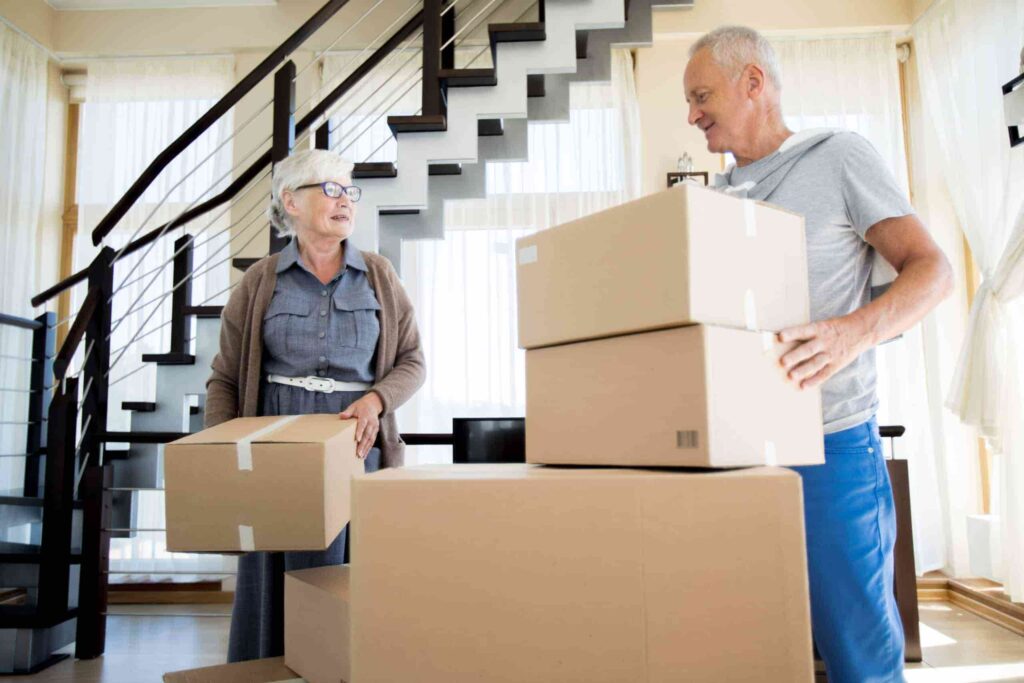It seems like Americans spend their whole lives trying to get more. Whether it’s money, success, or stuff; having more is often regarded as the ultimate status symbol. Perhaps that’s one of the big reasons why downsizing seems to go completely against what we’ve worked so hard for. But in retirement, downsizing isn’t a downgrade at all. It’s an opportunity to enjoy the fruits of your labor and the best kind of more — getting more out of life! We’d argue the very best place to do that is in senior living. Here’s why:
The Deal with Downsizing
You may be surprised to learn how many retirees are warming to the idea of downsizing. In fact, according to the Demand Institute, more than 40 percent of Americans aged 50 to 64 plan to move within the next five years. And boomers are expected to place a whopping 26 million homes on the market by 2030, per the Policy Center.
As for why, the University of Michigan’s National Health and Retirement Study found:
- 28% moved for family reasons (to be near children or to care for an older relative)
- 22% moved because of financial stress
- 21% moved to upgrade to a better house and/or location
- 16% moved for traditional retirement reasons (seeking warmer climate or leisure)
Downsizing to Senior Living
Even if we’ve convinced you to consider downsizing, the next question is, “Why senior living?” You certainly have other options, but none may give you quite the same level of benefits in one place:
- Carefree living – Forget worrying about the mortgage, property taxes, home insurance and unexpected repair bills. Even better, you’ll have housekeeping, laundry and home maintenance taken care of for you.
- Resort-like amenities – The measly two weeks of vacation during your working days has nothing on this! With beautiful grounds and amenities such as a pool, fitness center and restaurant-style dining you’ll feel like you’re on vacation all the time.
- More convenience – Senior living communities are specifically located in the center of it all, with easy access to the services, shopping and entertainment you want, and perhaps even to your family and friends.
- Peace of mind – Often, senior living communities have a continuum of care that includes retirement living, assisted living and/or memory care on the same campus to support your evolving health needs.
Lastly, and maybe most importantly, downsizing to senior living can do wonders for your overall well-being. Communities offer an ever-changing calendar of social activities and outings, educational and enrichment programs, fitness classes and even volunteer opportunities.

For more information on downsizing to senior living, check out our Family Guide to Funding Senior Care & Housing!
How to Downsize
Now that we’ve covered the why, next we’ll help you with the how. It’s easy to get overwhelmed, so we like to break this into two parts: your house and your stuff.
Tips for downsizing your home:
- Make inexpensive updates – A fresh coat of paint and updated lighting can go a long way.
- Make smart investments – If your home needs more extensive updates, put money where you’ll get the most return like kitchens, bathrooms, landscaping and exterior updates such as your front entry, siding and/or paint.
- Declutter – You want buyers to picture themselves making memories there, so remove personal photos/memorabilia and, in general, clean up and clear off wherever you can.
- Stage the house – Turn on the lights, open drapes and fluff pillows to create a welcoming feel.
- Inspect yourself – Be proactive before you list by doing your own inspection to uncover hidden issues; then take care of them or offer a one-year home warranty plan to give buyers peace of mind.
Tips for downsizing your stuff:
- Go slow – You don’t have to do everything at once. Just have packing supplies on-hand and focus on one room or area of the house at a time.
- Divide and conquer – Place items into categories such as: keep, donate or gift, sell and throw away or recycle.
- Let it go – It’s emotional to part with items you treasure so consider gifting to family or friends, donating to a worthy cause or taking photos of these items to make the process easier.
- Ask for help – Downsizing is more manageable, and more fun, with friends and family to help and reminisce.
Senior living offers benefits here. Request a floor plan to help evaluate how much space you’ll have so it’s easier to decide what will fit. The community may also provide certain items for your new home, so ask about that as well. Plus, communities may have recommendations on movers that specialize in downsizing and/or additional downsizing tips.



